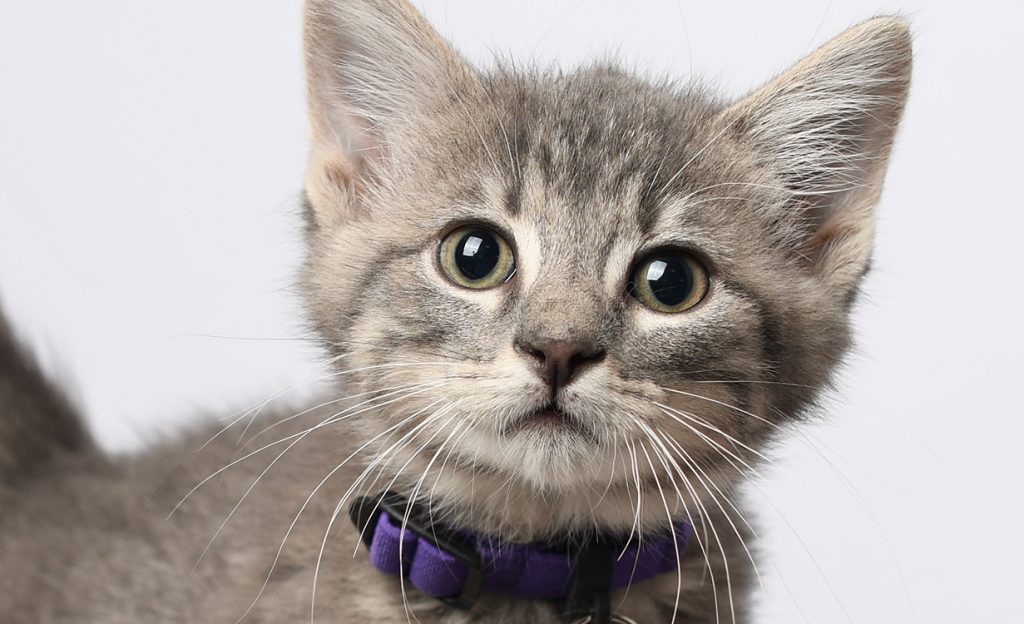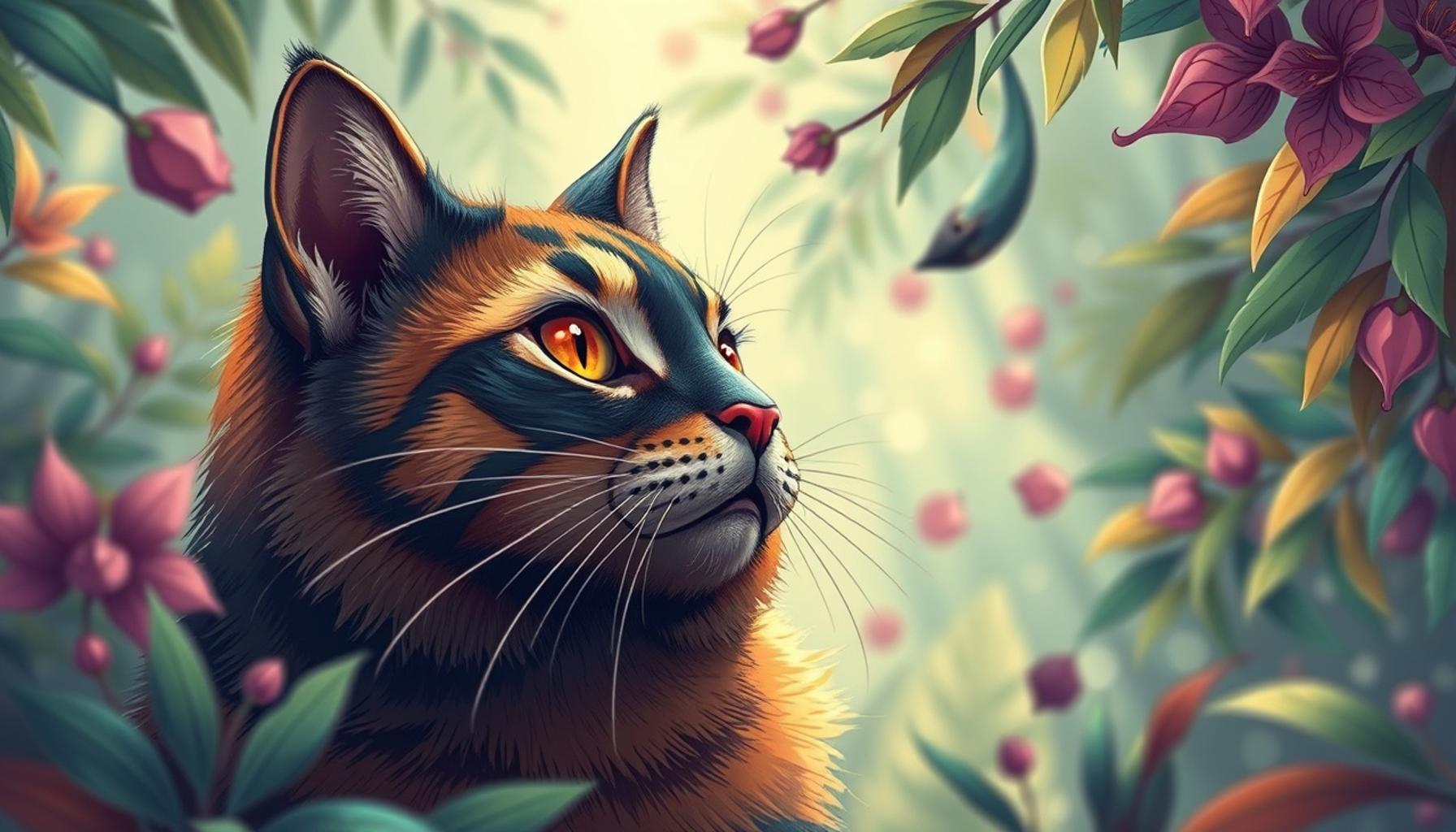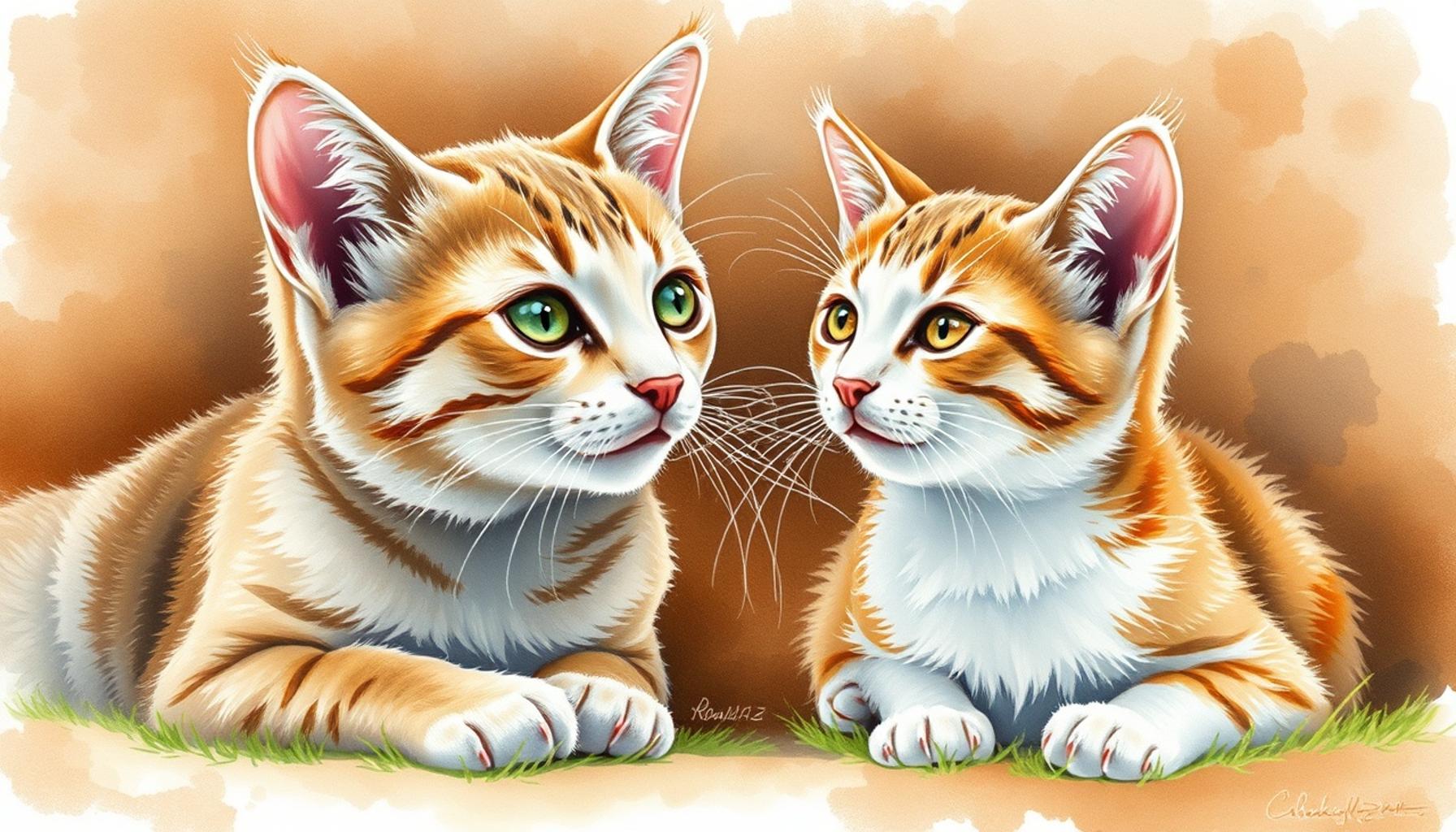How Age Affects Cats’ Behavior and Interaction with Their Owners

Understanding Feline Aging
Cats, much like humans, undergo significant behavioral changes as they age. Understanding how age affects their behavior and interaction with their owners is essential to providing the best care. These changes can influence everything from their playfulness to their need for affection, making it crucial for cat owners to stay informed about their pet’s life stages. Each phase of a cat’s life brings distinct experiences that contribute to their overall personality and relationship dynamics with humans.
Key Behavioral Changes
- Kittens: Bursting with energy, kittens are typically playful and curious, often requiring extensive interaction. They explore their environment with an insatiable curiosity, making them prone to mischief—think of a kitten batting at a dangling string or trying to fit into a box far too small for them. This stage is not only critical for physical development but also for socialization, as they learn vital behavioral cues from their interactions with humans and other pets.
- Adolescents: During this stage, which can occur from around 6 months to a year, cats may become more independent and even rebellious, showcasing bursts of high energy. They may challenge boundaries and test their limits, which can be both entertaining and frustrating for owners. It’s common for adolescent cats to engage in playful wrestling, high-speed sprints around the house, or periods of vocalization. Understanding this behavior is key to managing their energy levels effectively.
- Adults: As cats mature, typically around 1 to 10 years, they often settle down into a more predictable routine and bond with their owners. Post-adolescence sees a significant reduction in hyperactive antics, with many cats developing a defined personality. They may seek out more cuddle time and be more responsive to training or command. This period is ideal for establishing healthy habits and regular vet visits to monitor their health.
- Senior Cats: Senior cats, usually over 10 years old, may exhibit signs of decreased energy, sensitivity, or even behavioral issues related to health conditions. For example, an older cat may prefer quiet spaces for napping and might be less interested in vigorous play. Changes such as increased vocalization or altered litter box habits can signify health problems or discomfort, warranting a vet check-up. Ensuring they have a comfortable, stress-free environment is vital for their well-being.
Each life stage presents unique challenges and rewards in the owner-pet dynamic. Understanding these stages can deepen your relationship with your cat. Additionally, recognizing changed behaviors due to aging can help prevent misunderstandings—like blaming a sudden lack of playfulness on a personality change when it may actually stem from a health condition. Improving the quality of life for both the cat and its owner requires empathy, patience, and proactive management of care.
Why It Matters
By paying attention to these behavioral shifts, owners can provide appropriate care tailored to their cats’ changing needs. For instance, elderly cats might require softer foods or more accessible litter box options. Ensuring that they continue to receive routine veterinary care can also catch potential issues early, allowing for better health outcomes. This knowledge not only enhances daily interactions but also supports the well-being of your feline friend. As we explore further, the impact of age on cats’ interactions will reveal surprising insights into their unique personalities, encouraging pet owners to form deeper connections with their beloved cats.
DISCOVER MORE: Click here to learn about the vital role of balanced nutrition in your pet’s health
The Evolution of Feline Behavior Across Life Stages
The journey of a cat’s life is paved with vibrant moments and evolving behaviors that can significantly impact its relationship with owners. Understanding how age affects feline behavior can lead to more rewarding interactions and a deeper connection. From the exuberance of kittenhood to the quieter demeanor of senior cats, each age stage comes with its own unique set of characteristics and needs.

Behavioral Growth Stages
A cat’s age directly correlates with its behavior, which influences how they interact with their owners:
- Kitten Stage (0-6 months): Kittens are the epitome of playful energy. Their innate curiosity drives them to explore their surroundings, often leading them into humorous predicaments. This stage is paramount for socialization and learning appropriate behaviors. During this time, owners are encouraged to engage in interactive play to foster bonding and help kittens develop essential skills. The emotional attachment formed during these early interactions tends to be strong, laying the groundwork for a lifelong relationship.
- Young Adults (6 months – 2 years): As they transition into young adulthood, cats often exhibit a shift from boisterous play to more independent behavior. This is the “testing boundaries” phase, where cats may become more assertive or challenging in their interactions. Owners might witness moments of rebelliousness, as their feline companions push limits. Despite this, young adult cats also begin seeking affection on their terms, leading to unique relational dynamics.
- Mature Adults (3-10 years): Once cats settle into adulthood, they often develop more defined personalities and establish routines. During this phase, their interactions with owners typically become more predictable and affectionate. Adult cats may display a mix of playfulness and calmness, seeking companionship while also enjoying quiet time. This is an excellent phase for owners to focus on enriching the cat’s environment to keep them mentally and physically stimulated.
- Senior Cats (10 years and older): As cats enter their senior years, they may exhibit noticeable changes in both behavior and energy levels. Common signs include decreased agility and a preference for lounging over vigorous play. Owners may find that their elder cats become more vocal or less tolerant of certain situations, which could indicate discomfort or health issues. Providing a consistent and tranquil environment becomes essential during this period, as it helps maintain their well-being and fosters a warm bond.
By acknowledging these behavioral differences throughout a cat’s life stages, owners can enhance their pets’ quality of life. For instance, kitten socialization sets the foundation for their future interactions, while understanding senior cats’ health-related needs ensures that they remain content and nurtured. As we delve deeper into the nuances of how age affects cats’ behavior and interactions, we will uncover essential strategies for fostering stronger connections with these beloved companions.
Understanding Age-Related Changes in Cat Behavior
As cats age, their behavior and interaction patterns with their owners can undergo significant transformations. This aging process is influenced not only by physical health but also by behavioral traits that are often associated with different life stages. Understanding these changes is crucial for fostering a harmonious relationship between cats and their human companions.
Senior Cats and Their Unique Needs
Older cats may exhibit decreased energy levels and a more reserved demeanor. They often prefer a peaceful environment, leading to altered play behaviors. As they age, they might spend more time lounging and less time engaging in vigorous play. This shift can prompt owners to adopt gentler forms of interaction to keep their senior cats mentally stimulated. For instance, using feather wands or engaging in slow-paced games can maintain their interest.
Social Interaction Shifts
Interestingly, senior cats might also display changes in their social behaviors. While some cats become more affectionate and crave companionship as they age, others may become more aloof, valuing their personal space. Owners might notice these behavioral shifts, reflecting the cat’s need for comfort and stability in their environment. Keeping their surroundings consistent and providing cozy spots can help make them feel secure.
Health Factors Influencing Behavior
Furthermore, various health issues common in older cats, such as arthritis or dental problems, can directly impact their behavior. Pain and discomfort can lead to increased irritability or withdrawal. Thus, it’s crucial for owners to routinely monitor their cats’ health and witness behavioral changes that might signal underlying issues. Regular veterinary check-ups can help identify any health concerns early on, facilitating better care and interaction.
Table: Advantages of Understanding Age-Related Cat Behavior
| Category 1 | Category 2 |
|---|---|
| Behavioral Awareness | Facilitates deeper understanding of their emotional needs. |
| Improved Interaction | Enhances the bond through tailored play and care strategies. |
Grasping the nuances of how age affects cats’ behavior is not merely beneficial; it is essential for building a lasting relationship steeped in mutual respect and understanding.
LEARN MORE: Click here for valuable tips
Understanding the Impact of Age on Cats’ Socialization and Health
The age of a cat not only shapes its behavior but also influences the quality of the interactions they have with their human companions. Beyond the earlier phases of development, aging cats present unique challenges and opportunities that require owners to adapt their approaches. The interplay between age and health plays a crucial role in a cat’s personality and interaction style, and recognizing these factors can deepen the bond between feline and owner.
Socialization and Interaction Patterns
As cats age, their social dynamics with humans can evolve dramatically. Many cat owners may observe shifts in their pet’s willingness to engage with them, which can be attributed to both behavioral tendencies and health-related issues.
- Adult Cats (3-10 years): Adult cats in their prime often show a balanced approach to interaction. They tend to seek a mix of attention and independence, requiring understanding from their owners. Engaging in regular play sessions and providing affectionate grooming can strengthen the bond. For instance, cats might enjoy interactive toys that stimulate their hunting instincts while also satisfying their social needs.
- Senior Cats (10 years and older): The transition into seniority brings about remarkable changes. Many senior cats may become more selective in their social interactions. While some might develop a need for more frequent cuddling and reassuring gestures from their owners, others could retreat from vigorous activities, preferring quiet companionship instead. Engaging them through gentle petting or creating cozy spaces can help facilitate emotional connection while respecting their physical limits.
Health Considerations and Behavioral Changes
With aging often comes a variety of health challenges that can affect a cat’s temperament and behavior. Conditions such as arthritis, cognitive dysfunction syndrome, and sensory decline can lead to stress and changes in how cats interact with their owners.
- Mobility Issues: An older cat suffering from arthritis or other mobility issues may be less likely to jump on furniture or engage in play. This reduction in activity can create frustration for both cat and owner. Owners should provide extra support, such as ramps or soft bedding that reduces strain on the joints, allowing their pets to maintain comfort while connecting.
- Cognitive Changes: Cognitive dysfunction in older cats can manifest as disorientation, changes in sleep patterns, and anxiety. Owners might notice an increase in vocalization or confusion in familiar settings. To aid their cats, owners are encouraged to establish a consistent daily routine and introduce simple mental stimulation games to sharpen their pet’s cognitive abilities while reassuring them.
- Diet and Nutrition: Nutrition plays an essential role in maintaining a cat’s overall health and behavior throughout its life stages. Older cats may require a specialized diet that caters to their changing nutritional needs and addresses age-related health concerns. Ensuring proper nutrition can improve energy levels and overall mood, enhancing the human-feline relationship.
By paying attention to the specific challenges and changes faced by cats at different life stages, owners create an environment that fosters trust and understanding. This ongoing commitment to adapting to their feline friend’s unique needs assures that the bond between cats and their humans only grows stronger as time passes. Exploring these age-related dynamics will pave the way for more fulfilling interactions, ensuring that cats remain affectionate and engaged partners throughout their lives.
DISCOVER MORE: Click here for essential nutrition tips
Conclusion
Understanding how age affects cats’ behavior and interaction with their owners is essential for nurturing a fulfilling relationship with our feline companions. As cats transition through various life stages—from energetic kittens to more reserved senior cats—their social dynamics and health significantly influence their behaviors. Recognizing these changes allows owners to adapt their approach, ensuring that their pets feel comfortable and engaged.
During the prime of their lives, adult cats often showcase a blend of social and independent behaviors, thriving on interactive play that stimulates their instincts and reinforces their bond with humans. Conversely, senior cats may adopt a quieter demeanor, requiring adjustments in how we interact with them. Providing them with a serene environment, gentle affection, and mental stimulation can enhance their quality of life as they age.
Furthermore, the impact of health issues in older cats cannot be underestimated. Conditions like arthritis or cognitive decline may challenge their ability to interact meaningfully, making owner awareness and proactive care crucial. Simple lifestyle adaptations—like specialized diets or creating accessible spaces—can significantly improve their comfort and emotional connection with their owners.
Ultimately, embracing these age-related nuances not only fosters trust but also enriches the bond we share with our beloved cats. By prioritizing their changing needs, we can ensure that our relationships as companions continue to flourish, offering our feline friends a loving and attentive environment throughout their lives. By remaining observant and responsive, owners can navigate the complex journey of aging in cats, nurturing a lasting partnership that evolves beautifully over time.



